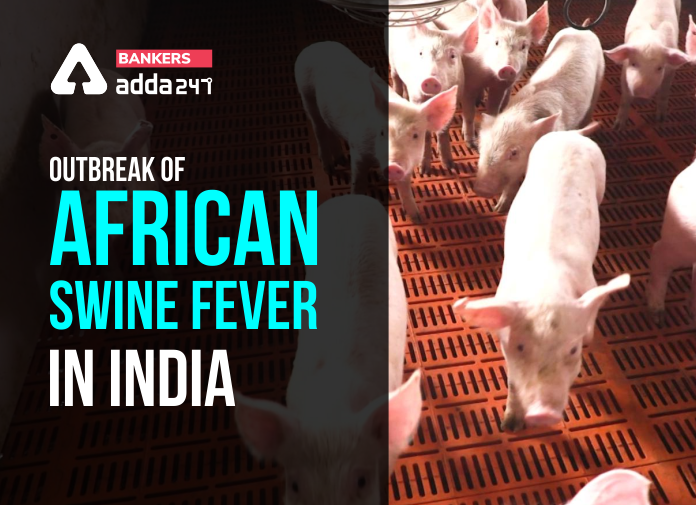Table of Contents
Outbreak of African Swine Fever in India. Assam has noted the first instance of African swine fever in the country. The outbreak of African Swine Fever(AFS) amid the COVID-19 pandemic has claimed more than 2900 domestic pigs across 306 villages of the state.
Assam’s animal husbandry minister Atul Bora has said, was detected towards the end of February this year.The minister also said that the swine fever has started in April 2019 at a village in Xizang province of China bordering Arunachal Pradesh. Although veterinary official said the rate of death has decreased over the last 48 hours. Earlier in April, there were reported deaths of pig die to the classical swine fever(CSF).
Also Check,
- Want To Get Job-Ready Before Lockdown Ends? Here’s What To Do
- WARRIOR | Banking Awareness Batch for SBI, RRB, RBI and IBPS Exams
ASF and CSF are different from Swine flu (HINI) and do not affect humans. CSF can be prevented by proper vaccination but there is no vaccination for ASF. Culling of the affected pigs is the only option. The AFS mortality rate is almost 100%. The focus is on preventing the disease from spreading and we have worked out some plans in consultation with officials, veterinary experts and pig farmers. The virus that causes AFS has not been found to infect humans, but they can be carriers, passing it on to uninfected pigs.
Practice With,
About African Swine fever Virus
African swine fever virus (AFSFV is a large, double-stranded DNA virus in the Asfarviridae family. (Coronaviruses are a group of related RNA viruses). It is the causative agent of African Swine fever (ASF). The virus causes a hemorrhagic fever with high mortality rates in domestic pigs; some isolates can cause the death of animals as quickly as a week after infection.
African swine fever virus (ASFV) causes severe disease in domestic pigs and wild boar that can result in death in almost all pigs that are infected. There is currently no treatment or vaccine available and therefore biosecurity measures are essential to prevent an outbreak from spreading. The clinical signs of ASF can vary but are similar to some other pig diseases. Signs typically occur 3-15 days after infection.
The early signs are non-specific and include:
- High fever, lethargy and loss of appetite.
- Pigs may die suddenly without further disease signs.
At later stages further signs may be observed including:
- Reddening of the skin (visible only in pale-skinned pigs), with patches appearing on the tips of ears, tail, feet, chest, or under the belly.
- Diarrhoea, vomiting.
- Laboured breathing.
- Swollen red eyes, eye discharge.
- Abortions, still-births.
- Increasing morbidity and unwillingness to get up.
| What is a Debenture? | Credit Rating Agencies in India | IMF releases “World Economic Outlook” |
History of African Swine fever Virus
The first outbreak was retrospectively recognized as having occurred in 1907 after ASF was first described in 1921 in Kenya. The disease remained restricted to Africa until 1957, when it had been reported in Lisbon, Portugal. An extra outbreak occurred in Portugal in 1960. After these initial introductions, the disease became established within the Iberian Peninsula , and sporadic outbreaks occurred in France, Belgium, and other European countries during the 1980s. Both Spain and Portugal had managed to eradicate the disease by the mid-1990s through a slaughter policy. In 2018 the virus spread to Asia, affecting quite 10 percent of the entire pig population in several countries, resulting in severe economic losses within the pig sector.
Click Here to Register for Bank Exams 2020 Preparation Material
Also Check,



 Adda247 Launched the Coaching with Degre...
Adda247 Launched the Coaching with Degre...
 Financial Regulators In India
Financial Regulators In India
 What is the Monthly Salary of Bank PO?
What is the Monthly Salary of Bank PO?


